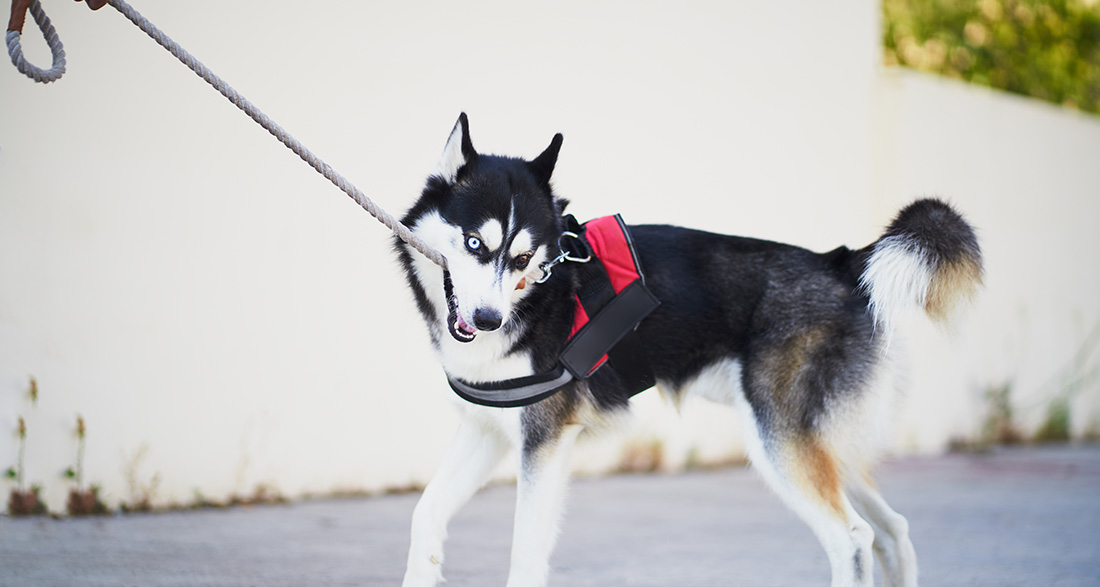Walking with your dog on a leash can be enjoyable and relaxing. However, when your dog starts to pull and bite the leash, daily walks can quickly turn into a challenging and exhausting experience.
When a dog bites the leash, it can consume a lot of energy, nerves, time, and money, and in certain situations, it can even be dangerous. If owners are distracted by their disobedient dog, they might overlook approaching bicycles, cars, or other potential dangers. Additionally, the relationship between the human and the dog suffers when walks become problematic.
To prevent your dog from biting the leash, it’s crucial to understand the reasons behind this behavior. Once you identify the causes, you can take appropriate measures and train your dog.
This dog guide explains the reasons behind your dog’s leash-biting behavior and provides tips on how to discourage this habit.
Dog Biting Leash: Causes
To address your dog’s undesirable behavior, it’s necessary to understand why your dog is biting the leash.
Possible causes include:
- Seeking Attention: The dog wants attention.
- Learned Behavior: The dog developed this behavior as a puppy.
- Displacement Behavior: Biting as a response to being overwhelmed, stressed, fearful, or excited.
- Communication: Using the leash as a means of communication with the owners.
- Boredom, Understimulation, or Frustration: Lack of mental or physical stimulation.
- Discomfort: The leash might be too tight or cause irritation.
Leash biting is rarely associated with dominance, leash aggression, or leash reactivity. However, if left unaddressed, the behavior may develop in these directions.
Consider the situations in which your dog bites the leash and how you react. Reflect on what happens before, during, and after the leash-biting behavior.
Note
Tightening the leash puts the dog on alert. Ideally, the leash should always be loose.
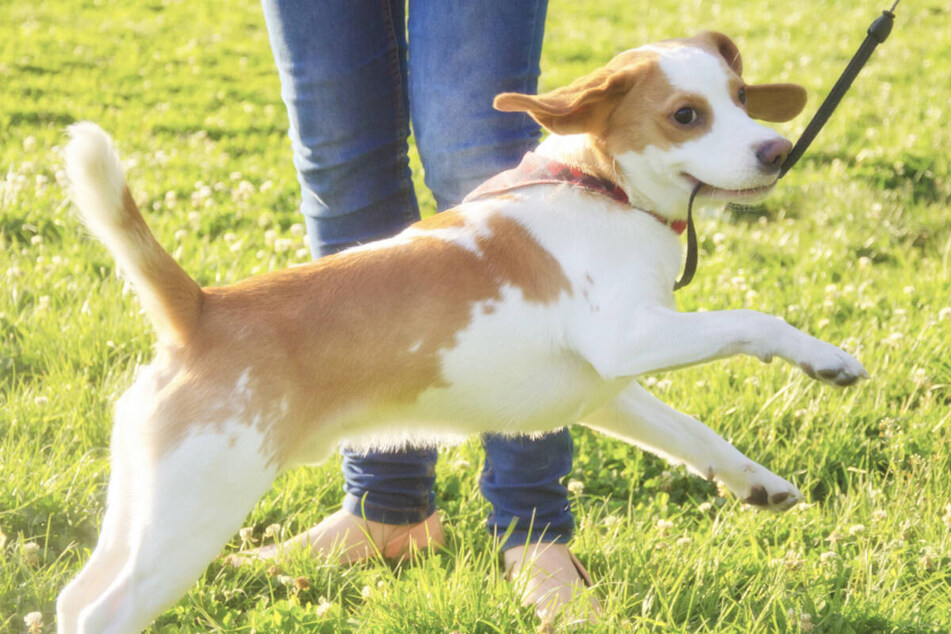
Is the Dog’s Leash Fitted Properly?
Leash biting might occur if the leash is too tight, causing discomfort or constriction around the neck. Allergic reactions to the leash material can also be a source of distress.
Inspect your dog’s neck for redness, rash, or other skin irritations. If present, the leash might be too tight or unsuitable for your dog.
Ideally, the collar should be as wide as the dog’s nose, with two fingers of space between the collar and the neck. However, the dog should not be able to slip its head out of the collar. Models like Moxon or show leads are generally unsuitable for regular use.
You may need to experiment with different leash models until you find the one that suits your dog best.
What to Do When Your Dog Bites the Leash
When your dog bites the leash, you might be tempted to pull the leash out of its mouth and scold it. However, such reactions are unhelpful and could reinforce the behavior.
Dog owners don’t need to passively observe.
The following tips can help when your dog bites the leash:
- Use an Interruption Command: Employ a crucial command, such as “Leave” or “No.” If the dog responds appropriately, reward it. Consistent and clear communication is essential.
- Drop the Leash: Release the leash and possibly step on it to prevent the dog from running away. Sometimes, removing the pressure and disconnecting from the dog can be sufficient.
- Ignore the Undesirable Behavior: If your dog is seeking attention through leash biting, do not reward it with immediate reactions. In dog training, reinforcing desired behavior is essential, while undesirable behavior should not be rewarded.In some cases, standing still and waiting until the dog releases the leash and calms down might be effective.
- Provide Sufficient Stimulation: If the walk is boring for your dog, leash biting might be a way to alleviate the monotony. Ensure that you are actively engaging with your dog during walks. Avoid staring at your phone and instead make the walk an enjoyable shared experience.Include various activities, games, changes in pace, and commands to keep your dog mentally stimulated. Adjust the level of activity based on your dog’s breed and age.
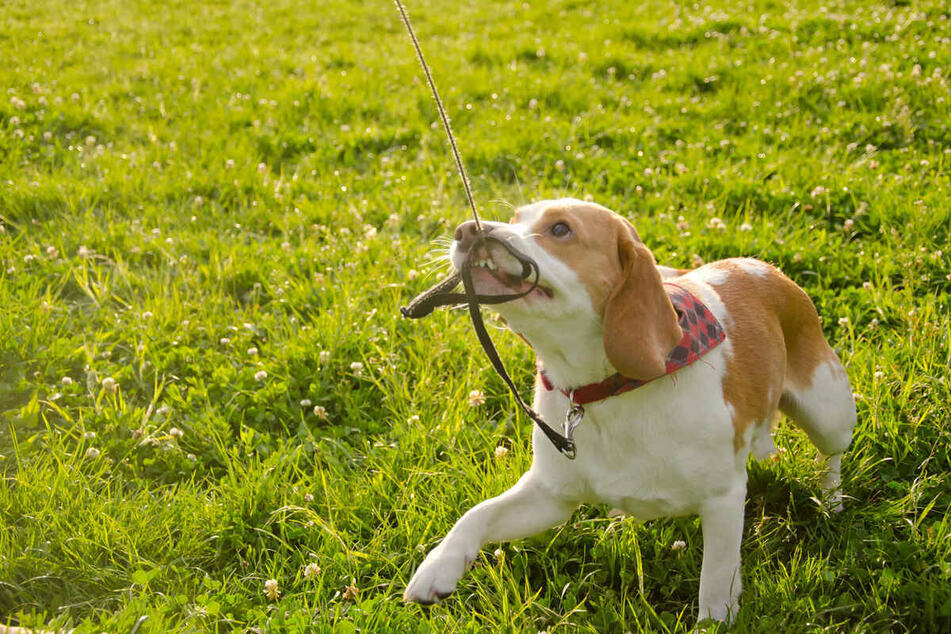
- 5. Distract the Dog: If the dog forgets about the leash, it won’t occur to them to bite it. The leash is merely a tool for dog owners to guide their dogs and resolve potentially dangerous situations. However, the leash itself should not hold significance. Give your dog a stick, a chew toy, or a toy that they can carry in their mouth while walking. This way, the dog has a task and cannot bite the leash. Don’t forget to praise the dog when they walk with a loose leash or carry their toy obediently. It’s essential not to immediately offer alternatives to the dog as a consequence for biting the leash. Otherwise, they will learn that they get a task or a toy when they bite the leash.
- 6. Use Tools: In addition to sticks and toys, you can also use other tools. Perhaps a harness suits your dog better than a collar. If the dog persistently bites the leash, a muzzle can also be employed. While it doesn’t address the root cause of the problem, it can be useful during training.
- 7. Seek Assistance: To understand and respond appropriately to the dog’s behavior, professional training at a dog school or with trained individuals can be beneficial. It’s counterproductive if walks become a permanent burden for both the owners and the dog.
To discourage the dog from biting the leash, your patience and consistency are essential. Try different tools and discontinue the situation when the dog bites the leash.
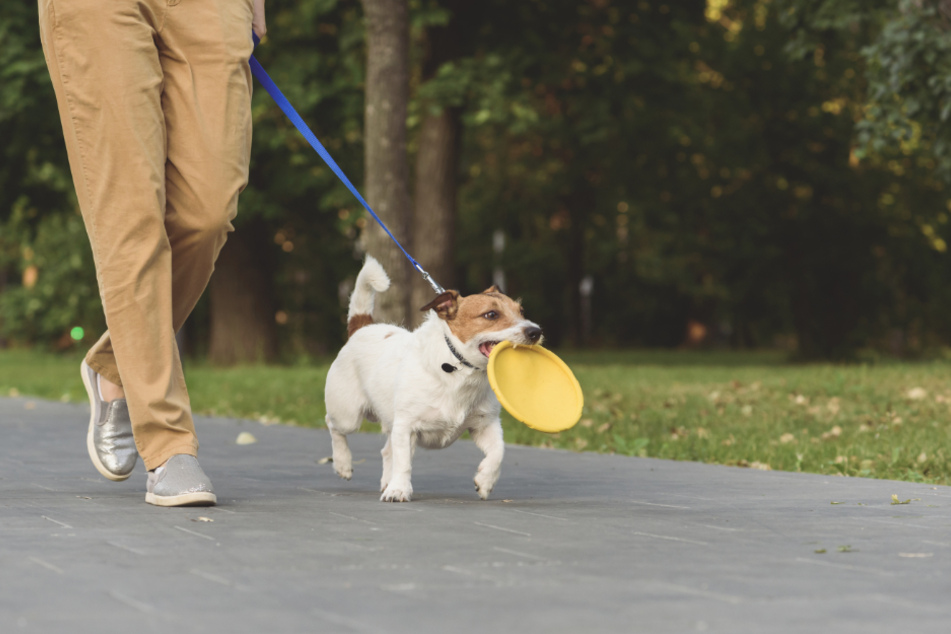
Puppy Biting Leash: How to Handle It
Young dogs do what is fun and rewarding for them. Puppies are playful and may see the leash as a toy. When owners pull on the leash, it’s like playing for the puppy. Ensure that the situation doesn’t turn into a game for the puppy.
However, stress, fear, overwhelm, and the desire to test boundaries can also be reasons for this behavior in puppies.
With a puppy, discourage and train against the undesirable behavior early on, as the problem may persist into adulthood if left unaddressed.
With a puppy, you can calmly stop, take the leash from their mouth, and give an interruption command like “No.” Ensure that the leash is not constantly dangling in the puppy’s field of view.
Tips for Walking a Puppy:
- Walk at an appropriate pace (not too fast).
- Take shorter but more frequent walks.
- Stay relaxed.
- Take breaks.
- Make it exciting, let them sniff and explore.
- Keep the leash loose.
- Reinforce desired behavior frequently and always positively.
- Never use the leash as a toy.
- The dog sets the training pace.
- Be patient!
Take time for the dog, and don’t be discouraged by setbacks. Dogs may take quite a while to understand what behavior is desired and what they should avoid.
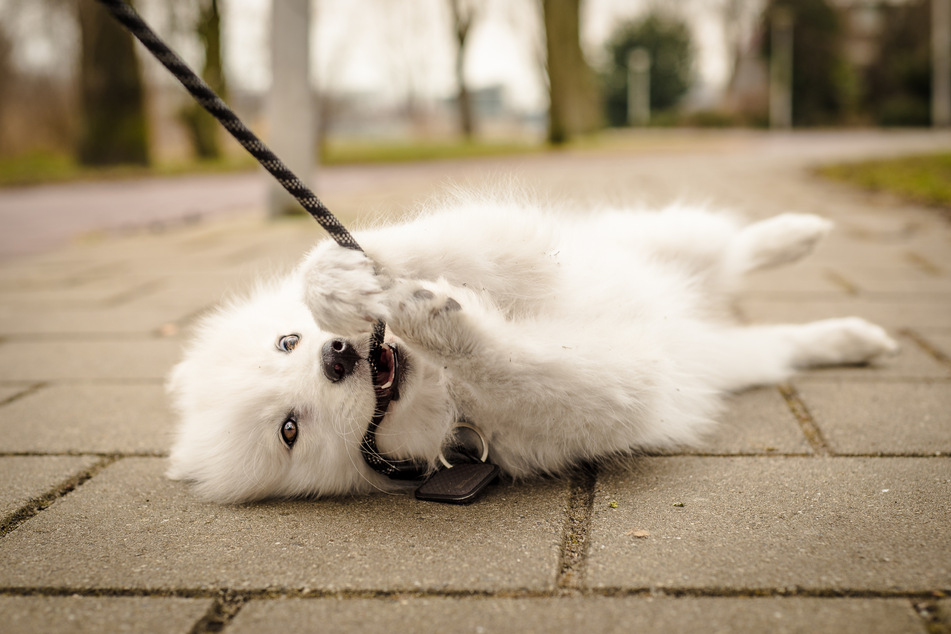
What Not to Do When the Dog Bites the Leash
Some reactions, ideas, and measures against the dog’s behavior do not achieve the desired result. Often, the opposite happens, and they worsen the problem or even harm the dog.
The following does not help when the dog bites the leash:
- Hitting or punishing the dog.
- Yelling at the dog.
- Pulling on the leash.
- Keeping the leash consistently taut and short.
- Offering a treat as a replacement for the leash.
- Refraining from walking the dog.
- Using a metal chain leash.
- Smearing sharp or acidic sauces on the leash.
Some of these might provide a short-term solution but do not address the root cause. If the underlying issue is not understood and changed, it can lead to further behavioral problems in the dog.
Conclusion:
Do not punish what the dog does wrong; instead, praise what they do right. With training, consistency, and patience, you can teach your dog to stop this behavior, making your walks together enjoyable again.


